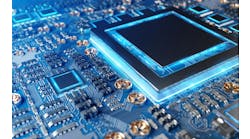René Hummen is manager, technology & innovation, at Hirschmann Automation and Control.
How do industrial-networking technologies figure into digital-twin platform models being used by manufacturers?
René Hummen, manager, technology & innovation, Hirschmann Automation and Control: Digital-twin platforms commonly rely on real-time data from the physical world. Novel networking technologies including time-sensitive networking (TSN) and single-pair Ethernet (SPE) promise broad access to such data by enabling open-network architectures and Ethernet to the field.
Also read: The edge moves deeper into the industrial Internet of Things
Digital-twin platforms can kick into high gear when these novel networking technologies are combined with semantic data modelling as provided by OPC UA and remote access for data processing in the cloud.
Edge computing then plays a crucial role with the following two key value-adds. First, it enables data aggregation and pre-processing close to the source, thus alleviating the need for big data pipes through local networks and to the Internet service provider. Second and even more importantly, edge computing enables the data owner to exercise fine granular control over the raw data and derived information that he or she is willing to share with digital-twin platforms.
When will industrial-networking technology become IT-friendly enough that engineers are no longer required for installation and operation?
René Hummen, manager, technology & innovation, Hirschmann Automation and Control: OT engineers will continue to program, deploy, monitor and maintain production processes, as well as their underlying applications for the foreseeable future. However, there is a clear trend toward declining OT-specific networking expertise with many end users. Future OT networks and their tooling will therefore have to adapt to this new situation and cater to non-networking OT experts, as well as non-OT networking experts from IT. This implies intuitive and easy-to-use tools for planning and operation of networks that fulfil OT requirements around structure, reliability and determinism.
What future innovations will impact the use of industrial-networking technology in discrete-manufacturing operations?
René Hummen, manager, technology & innovation, Hirschmann Automation and Control: Looking at the increasing adoption of digitalization in discrete-manufacturing operations and the technical requirements that are coming along with it, it is evident that novel networking technologies such as TSN and SPE, as well as edge computing, will be future cornerstones of industrial networking.
All three innovations will work in concert. TSN enables converged networks and deterministic communication with open-network architectures based on standard Ethernet. SPE enables this open, converged and deterministic Ethernet to permeate to the field level. This will eventually allow even the smallest sensors to become first-class citizens of future industrial networks. Finally, edge computing allows users to fully leverage the resulting direct access to sensor data, without the need for a PLC as middleman and without the need to change a running system: a dream come true for any data scientist and data-driven enterprise.






